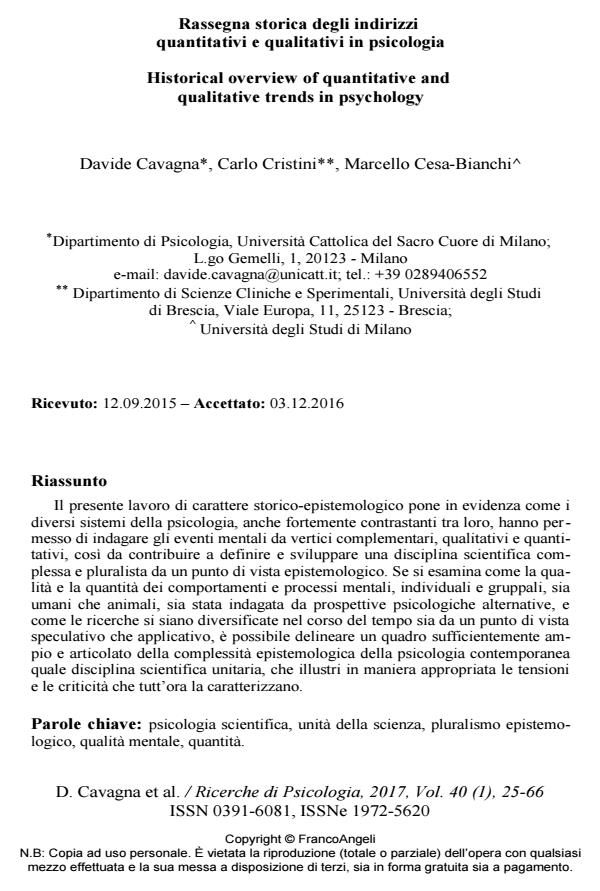Rassegna storica degli indirizzi quantitativi e qualitativi in psicologia
Titolo Rivista RICERCHE DI PSICOLOGIA
Autori/Curatori Davide Cavagna, Carlo Cristini, Marcello Cesa-Bianchi
Anno di pubblicazione 2017 Fascicolo 2017/1
Lingua Italiano Numero pagine 42 P. 25-66 Dimensione file 327 KB
DOI 10.3280/RIP2017-001002
Il DOI è il codice a barre della proprietà intellettuale: per saperne di più
clicca qui
Qui sotto puoi vedere in anteprima la prima pagina di questo articolo.
Se questo articolo ti interessa, lo puoi acquistare (e scaricare in formato pdf) seguendo le facili indicazioni per acquistare il download credit. Acquista Download Credits per scaricare questo Articolo in formato PDF

FrancoAngeli è membro della Publishers International Linking Association, Inc (PILA)associazione indipendente e non profit per facilitare (attraverso i servizi tecnologici implementati da CrossRef.org) l’accesso degli studiosi ai contenuti digitali nelle pubblicazioni professionali e scientifiche
Il presente lavoro di carattere storico-epistemologico pone in evidenza come i diversi sistemi della psicologia, anche fortemente contrastanti tra loro, hanno permesso di indagare gli eventi mentali da vertici complementari, qualitativi e quantitativi, così da contribuire a definire e sviluppare una disciplina scientifica complessa e pluralista da un punto di vista epistemologico. Se si esamina come la qualità e la quantità dei comportamenti e processi mentali, individuali e gruppali, sia umani che animali, sia stata indagata da prospettive psicologiche alternative, e come le ricerche si siano diversificate nel corso del tempo sia da un punto di vista speculativo che applicativo, è possibile delineare un quadro sufficientemente ampio e articolato della complessità epistemologica della psicologia contemporanea quale disciplina scientifica unitaria, che illustri in maniera appropriata le tensioni e le criticità che tutt’ora la caratterizzano.
Parole chiave:Psicologia scientifica, unità della scienza, pluralismo epistemologico, qualità mentale, quantità.
- Carlo Cristini: un ricordo a pi&ugrav Alessandro Antonietti, Carlo Cipolli, Rossana De Beni, Anna Maria Della Vedova, Santo Di Nuovo, Mario Fulcheri, Gianbattista Guerrini, Luciano Peirone, Alessandro Porro, Pietro Vigorelli, in RICERCHE DI PSICOLOGIA 4/2022 pp.1
DOI: 10.3280/rip2021oa13098
Davide Cavagna, Carlo Cristini, Marcello Cesa-Bianchi, Rassegna storica degli indirizzi quantitativi e qualitativi in psicologia in "RICERCHE DI PSICOLOGIA " 1/2017, pp 25-66, DOI: 10.3280/RIP2017-001002